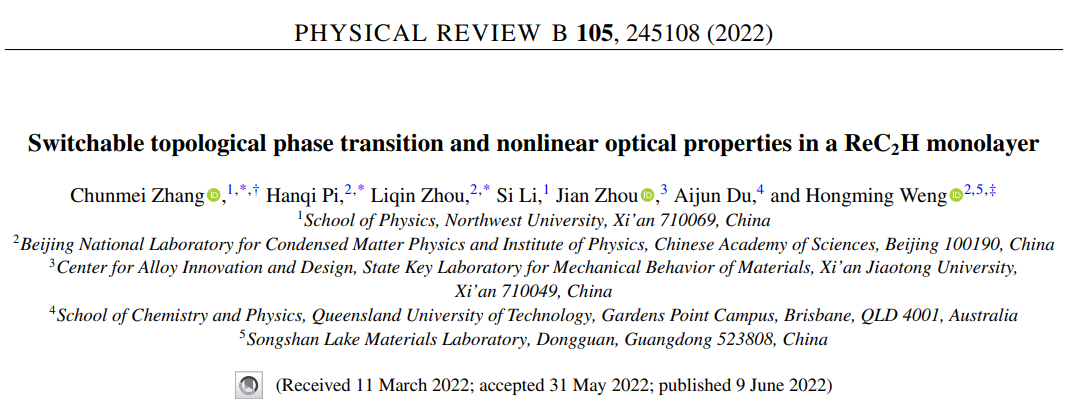
The topological phase transitions (TPTs) in three-dimensional compounds have attracted great attention in both condensed-matter physics and applied physics. Compared to the TPT in bulk structures, TPTs in noncentrosymmetric two-dimensional materials are less common and require further study. This work explores an inversion asymmetry structure, ReC2H monolayer by first-principle calculation. We show that it undergoes two TPTs at the critical biaxial strain of 2.3 and 7.8%, where the material transforms from normal insulator to Z2 topological insulator and back to normal insulator, respectively. In the first TPT, the band inversion occurs at the generic momentum. The second one occurs at the high-symmetric K point, identified by an exchange in the components (or irreducible representations) of the wave functions. These quantities are challenging to be detected using experimental techniques, such as angle-resolved photoemission spectroscopy. Since the nonlinear optical (NLO) response is very sensitive to the components and symmetries of the engaged bands, we study the shift current generation during the two aforementioned TPTs. We find that in both TPTs, the shift vectors change sign around momenta where the band gap closes and reopens. By considering the overall contribution of shift vectors weighted by the absorption rate in the whole Brillouin zone, the shift current may keep its direction under band inversion. This work offers the insight that a scrutinized examination is highly demanded in utilizing the shift current to detect TPT.
Link:https://journals.aps.org/prb/pdf/10.1103/PhysRevB.105.245108